Where Does Crawl Space Humidity Come From and How Do I Deal With It?

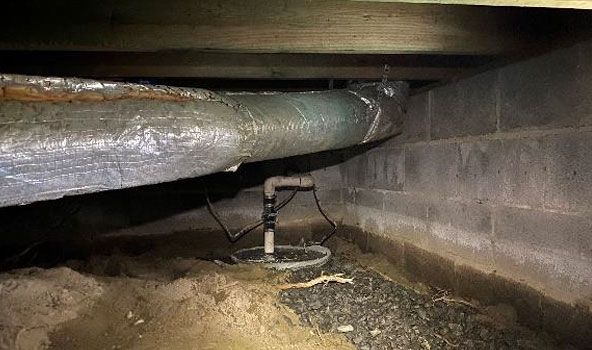
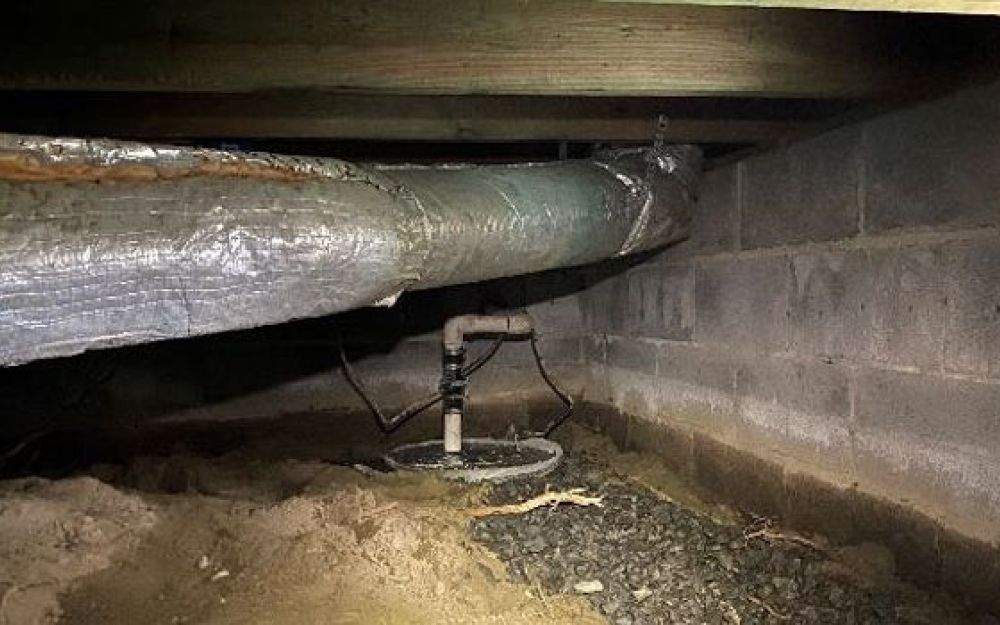
As of 2020, HomeAdvisor estimates the average cost of crawlspace repair to be $6,000. That’s a lot of money in today’s tough economy, so you want to prevent ending up there. One way to do so is to tackle such issues as crawl space humidity as early as possible.
Crawl space moisture can wreak havoc on a home, destroying not only the crawl space itself but other parts of your home. But where exactly does this moisture come from? More importantly, how can you effectively tackle this problem?
If you’re asking yourself these questions, you’ve come to the right place. This comprehensive guide tells you all you need to know about dealing with a damp crawl space.
But first,
What Are the Proper Crawl Space Humidity Levels?
Having some humidity in your crawl space can be a good thing. The question is, how much humidity should you have?
According to experts, 55 percent humidity is ideal for your crawl space. Anything above 65%, and you’ll be dealing with moisture problems soon. Below 40% and you may begin to notice shrinkage in the house.
But how do you determine that the moisture levels in your home are ideal? The best way is to invest in a thermo-hygrometer. As the humidity exceeds 65 percent, it’s time to do something about it.
What Are the Dangers of Excessive Crawl Space Humidity?
So why should you be worried about high humidity levels in your crawl space? Below are a few reasons:
Mold Growth
Mold thrives in damp areas. If there’s moisture in your crawl space, you can almost be certain that you’ll have to face mold problems within a short time.
Mold growth on the wood in your crawl space is a serious problem, even if the growth occurs in spots. White mold usually grows on the surface of the wood and doesn’t do any real damage to the wood. However, it’s still a sign that you have high moisture levels in the crawl space and need to take appropriate action.
A bigger issue is black or brown mold. This can be wood-rot fungus and signals that structural damage is already taking place. Urgent action is necessary.
If you spot things that look like roots growing into the wood from the ground below, you’re looking at Poria fungus. This type of fungus is extremely dangerous to your home’s structure. If you don’t get expert help, Poria fungus can destroy a structure within a few months.
Wood Rot
Another common problem with excessive humidity levels in your crawl space is that it can cause wood rot. Too much humidity causes moisture content in the wood to exceed the fiber saturation point. When that happens, wood immediately starts to rot, which puts your home’s structure in danger.
Bugs
Bugs are another common problem when there’s too much moisture in your crawl space. In particular, spiders, termites, slugs, camel crickets, centipedes, and millipedes prefer damp crawl spaces. That’s because they can get food, water, air, and security in such areas.
Health Hazards of Ignoring Crawl Space Humidity
Did you know that ignoring humidity in your crawl space can harm your health? Here are just a few reasons why:
Allergies
High humidity in your crawl space creates an ideal environment for mold and mildew. These sneaky fungi love damp places. When they grow, they release tiny particles into the air. When you breathe in these particles, they can trigger allergies.
Asthma Attacks
Excess moisture can irritate your lungs, making it harder to breathe. This can be especially tough for people with asthma. If you or your family members have been having more asthma attacks, it might be time to check your crawl space.
Bad Air Quality
A damp crawl space can harm the air quality in your entire home. This is because the air in your crawl space can move into other parts of your house. Bad air quality can lead to headaches, fatigue, and even long-term health problems.
To keep your family safe and healthy, it’s important to manage humidity in your crawl space.
Warning Signs of Crawl Space Issues: What to Look Out For
Crawl space humidity can cause a multitude of problems, which is why it’s essential to be aware of the warning signs. Keep an eye out for these common indicators of crawl space issues:
Musty Odors
If you notice a strong, musty smell in your home, it could be a sign of excessive crawl space humidity.
Mold or Mildew
Visible mold or mildew on walls, floors, or insulation is a clear indicator of moisture problems.
Damp or Wet Insulation
Insulation that is wet or damp to the touch is a red flag for crawl space humidity level issues.
High Indoor Humidity
If you find your indoor humidity is consistently higher than it should be, check your crawl space humidity chart for moisture problems.
Pest Infestations
Pests like rodents, insects, and termites are attracted to damp environments. An infestation could point to excessive crawl space humidity.
Sagging or Uneven Floors
High humidity levels can cause wood to rot and weaken, leading to sagging or uneven floors.
What Causes Humidity in the Crawl Space?
The best way to tackle crawl space moisture problems is to know what has caused them in the first place. Below, we discuss four of the likeliest reasons you have too much humidity in your crawl space.
Stagnant Water Within the Crawl Space
Standing water in your crawl space can lead to wet, moldy, and musty conditions. Flooded crawl spaces constantly release water vapor into the air, which increases the overall humidity of the crawl space.
If the water in the crawl space is standing on top of the vapor barrier, the problem is even worse. The purpose of the vapor barrier is to control the moisture from the earth below. When it’s covered by the standing water, the vapor barrier increases the release of moisture into the crawl space, which increases humidity levels within the space.
Many times, homeowners are unaware that their crawl spaces are flooded. That’s why it’s wise to regularly inspect the space to find out whether there’s stagnant water there. Some of the signs to look for include horizontal watermarks on walls and piers, dirt covering the vapor barrier, and wet soil along your crawl space’s perimeter.
There are many causes of crawl space flooding. These include prolonged or heavy rains, plumbing leaks, gutter downspouts that discharge next to your house, and snow melting.
Moisture Evaporating From the Ground
Sometimes, the ground below your crawl space is saturated with water. Moisture then evaporates into the air above increasing humidity levels.
Even if the soil appears dry, it’s probably because moisture is evaporating into the crawl space. Once you’ve installed a thermo-hygrometer, it’ll be easy to know whether you have a ground moisture evaporation issue.
Outdoor Air Entering the Crawl Space Through Space Vents
Crawl space vents are meant to fix humidity issues within the crawl space. But they can contribute to the problem instead.
How?
When the air outside is damp, the air within the crawl space becomes vented with damp air. This increases the moisture problem within the crawl space.
During the summer, the hot air that vents into your crawl space comes into contact with the cool air inside, cooling in the process. Condensation forms on the surfaces of the crawl space, adding to the humidity. That’s why vents are not the best solution for controlling humidity within your crawl space.
How Do You Fix Crawl Space Humidity Problems?
High humidity levels in your crawl space are bad news. Ignoring them can lead to expensive repairs in the long run. Below are a few ways to handle the problem.
Deal With Standing Water
If you’ve noticed flooding in your crawl space, identify what may be causing the problem first. Find out whether it may be that the soil is sloped towards the foundation. If so, then do what’s necessary to make sure it slopes away from your home’s foundation.
What if the issue is a plumbing leak? Then, you’ll need to find a plumbing expert to identify the specific pipe with the leak and fix it right away. Sometimes, even a leak as tiny as a pinhole can cause big problems.
Install a Sump Pump
A sump pump refers to a pump inside a bucket that’s dug into the earth in your crawl space. Water in your crawl space drains into the bucket. Once the water is in the bucket, the pump comes on and drains it to your home’s exterior.
Installing a sump pump may be the ideal solution to keep water out of your crawl spaces. Once you’ve installed it, be sure to check it a few times each year to ensure it’s functioning properly.
Invest in a Vapor Barrier
A vapor barrier covers your crawl space’s floor. This thick sheet of plastic is especially crucial for crawl spaces with dirt floors.
Vapor barriers keep moisture underneath them, preventing the moisture from reaching the wood joists that make up your floor. The barrier also helps keep your insulation dry.
Be sure to use an expert when installing a vapor barrier. That’s because your vapor barrier doesn’t just control the humidity in your crawl space but also protects your indoor air. You want to make sure the installation is done right so your indoor air stays fresh and free of allergens.
Consider Crawl Space Dehumidifiers
Another step that’s often necessary for keeping humidity levels at the right level is to install a crawl space dehumidifier.
Usually, a crawl space dehumidifier is positioned appropriately inside the crawl space to ensure optimal air circulation. As its fan circulates, it spreads clean, dry air throughout the crawl space. This helps keep humidity levels down.
Crawl Space Encapsulation: Advantages
One of the most effective ways to deal with crawl space humidity is through encapsulation. This process involves installing a high-quality crawl space moisture barrier that completely seals the area from the ground, walls, and even the ceiling. Some key advantages of encapsulating your crawl space include improved air quality, pest control, enhanced home value, moisture control, and more.
Crawl space encapsulation is a smart investment that maintains a healthy, energy-efficient, and comfortable home.
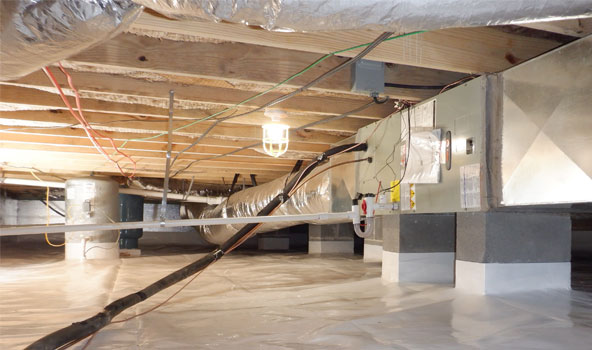
Control
Choosing a Crawl Space Company
If you’ve noticed a problem with your crawl space, it’s always wise to work with a professional to ensure that it’s addressed effectively. But how do you know you’ve found the right person for the job? Look at the following three factors.
Reputation
This is essential. You want to be sure that you can trust the company you’re working with to do what they promise. Get references and read customer reviews to get a good idea of what to expect once you hire the company.
Quality of Products
The quality of products that the company uses will determine the results you can expect from the job done. That’s why you need to enquire from the outset whether the company uses premium products that come with long warranties.
Price
Prices can vary dramatically depending on the nature and size of the job. Get multiple quotes and choose a price that’s comfortable for you. Beware of suspiciously low quotes as they may hide other fees or signal a poor-quality job.
Proper Crawl Space Humidity Levels Are Essential in Your Home
Maintaining the right crawl space humidity levels is vital for the overall health of your house. Excessive crawl space moisture can lead to mold, wood rot, and bugs, all of which can destroy your home over time. If you think you have too much humidity in your home, consider installing a sump pump, crawl space dehumidifiers, or a vapor barrier.
Are you interested in reliable crawl space solutions for your home? Please contact us today.
We Offer Free Inspections & Affordable Repair Options.
Concerned about your home’s crawl space or foundation? We’ll send an expert to inspect your concerns, take photos, and provide guaranteed solutions with a free inspection. Call 757-460-0444 or book your free inspection online.
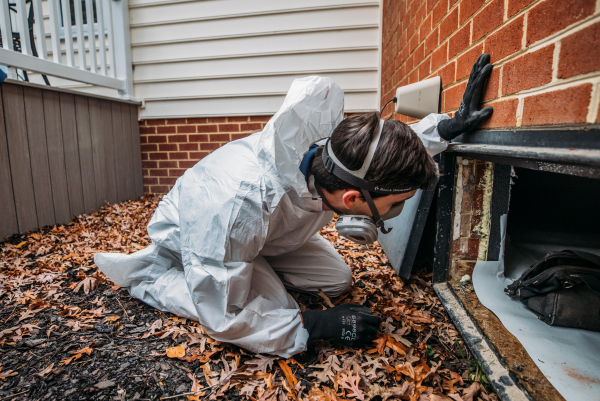
#1 Rated Locally for Crawl Space Humidity Solutions
Our reviews show our commitment to taking great care of our customers over the years. We pride ourselves on giving great customer experiences & delivering excellent value. Our experience & efficiency allow us to do more, for less.
- Google – 4.9 Rating with 800+ Reviews
- Angi – 4.9 Rating with 300+ Reviews
- Facebook – 5.0 Rating with 300+ Reviews
- HomeAdvisor – 4.9 Rating with 200+ Reviews
- Better Business Bureau – 4.9 Rating with 300+ Reviews
Experts Focused on Delivering Great Customer Experiences.
With over 5,000 happy customers & over 400 years of collective experience, we are Hampton Roads VA’s preferred crawl space & foundation repair contractor. Our team of crawl space & foundation repair specialists have special methods, materials, tools, and experts to make any project a success.
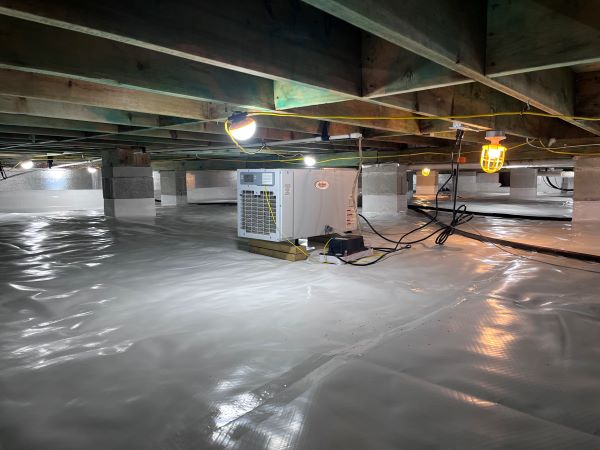
Voted #1 for Crawl Space Moisture Control
Our award-winning team of experts have hundreds of years of collective experience in crawl space and foundation repair. Here are a few reasons why our customers love us:
- Photos included with free inspections
- Flexible and customized options
- Discounts and financing available
- Excellent long-term warranties
- Great communication
The BAY Process
Whether you’re experiencing termite damage in your crawl space or need one of our specialists to look for potential foundation damage, the BAY process for all our services is quick and simple.
Step 1: Schedule a Free Inspection
The first step in our crawl space repair process is to contact us and schedule a free professional inspection. We’ll take our time assessing your space and then provide you with photos and an action plan.
Step 2: Choose a Repair Plan
Our specialists help you find the best solution for your situation. Depending on the issues identified, we’ll help you choose the best plan for your needs.
Step 3: Let Us Do the Work
We’ll fix any issues that we have identified. All you have to do is relax, knowing the job is in capable hands.
Step 4: Enjoy a Stable, Healthy Home
Now you can enjoy a healthy, stable home. We guarantee a safe and structurally sound crawl space free of mold, water damage, etc.
Request Your Free Inspection
Expertise delivered right to your door. Request your free inspection today.

